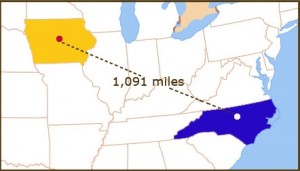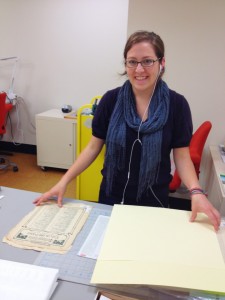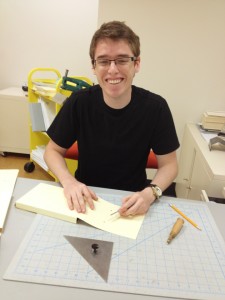 This month on the 1091 Project we are talking about one of our greatest assets, our student assistants. Like most academic departments, we hire students to help with the day-to-day operations of the lab. We usually have two students who work a total of twenty hours per week during the school year. Occasionally we hire extra students during the year if special projects come up. We have talked before about what we look for in student assistants and the work they do. This month we will discuss how we advertise openings, and the process of hiring and training students.
This month on the 1091 Project we are talking about one of our greatest assets, our student assistants. Like most academic departments, we hire students to help with the day-to-day operations of the lab. We usually have two students who work a total of twenty hours per week during the school year. Occasionally we hire extra students during the year if special projects come up. We have talked before about what we look for in student assistants and the work they do. This month we will discuss how we advertise openings, and the process of hiring and training students.
How We Find Students
Every institution’s hiring workflow is different. We use a campus-wide system to enter critical job details such as the position description, rate of pay, location, hours and supervisor. Once approved, the open position displays on the Library’s jobs website. I also post the positions to DukeList, a Duke-community-only bulletin board.

Getting hired in Conservation is not a first-come-first-hired endeavor. I invite students in for a 15-20 minute interview. I give them a tour of the lab and explain what we do, what our students do, and introduce them to the person who will train them and manage their work.
I then sit them down to ask questions as you would with any job applicant:
- What skills and experience do you have that would be transferable to this position?
- Do you have any job experience or hobbies that would demonstrate good eye-hand coordination and attention to detail?
- Do you have experience in a job wherein the work is repetitive but you have to pay close attention?
I want to figure out if they will show up on time, quickly learn the ropes, and be able to work independently but be willing to ask questions if they are stuck. I also try to figure out if they will be a good personality fit. An open lab means you have to work side-by-side with a lot of different people and you need to be able to negotiate that dynamic.
Training
I generally leave the training to Mary, one of our senior technicians. She shows the students where to pick up materials, how to do the rough sort, and how to separate out the shelf-preparation work from the repairs and put them on the appropriate shelves. She also demonstrates how to make various enclosures and pockets, how to do the minor repairs, and what to do with completed work.

New students take a few weeks to learn the job, but once they have it we allow them to work fairly independently. We check in regularly to see how they are doing and ask if they have any questions. By the time they are with us for a couple semesters, the students come in, take the work from the shelves and complete it without much oversight other than to convey special project instructions or to follow up on quality control issues.
Training students takes time but it pays off. We rely on their expertise to get a lot of work done and trust them to do a good job. We also get to know them as people and get to cheer them on as they hit academic and personal milestones. Without our students we would get far less done for the library.
Let’s head over to Parks Library Preservation to see their perspective on student assistants.

